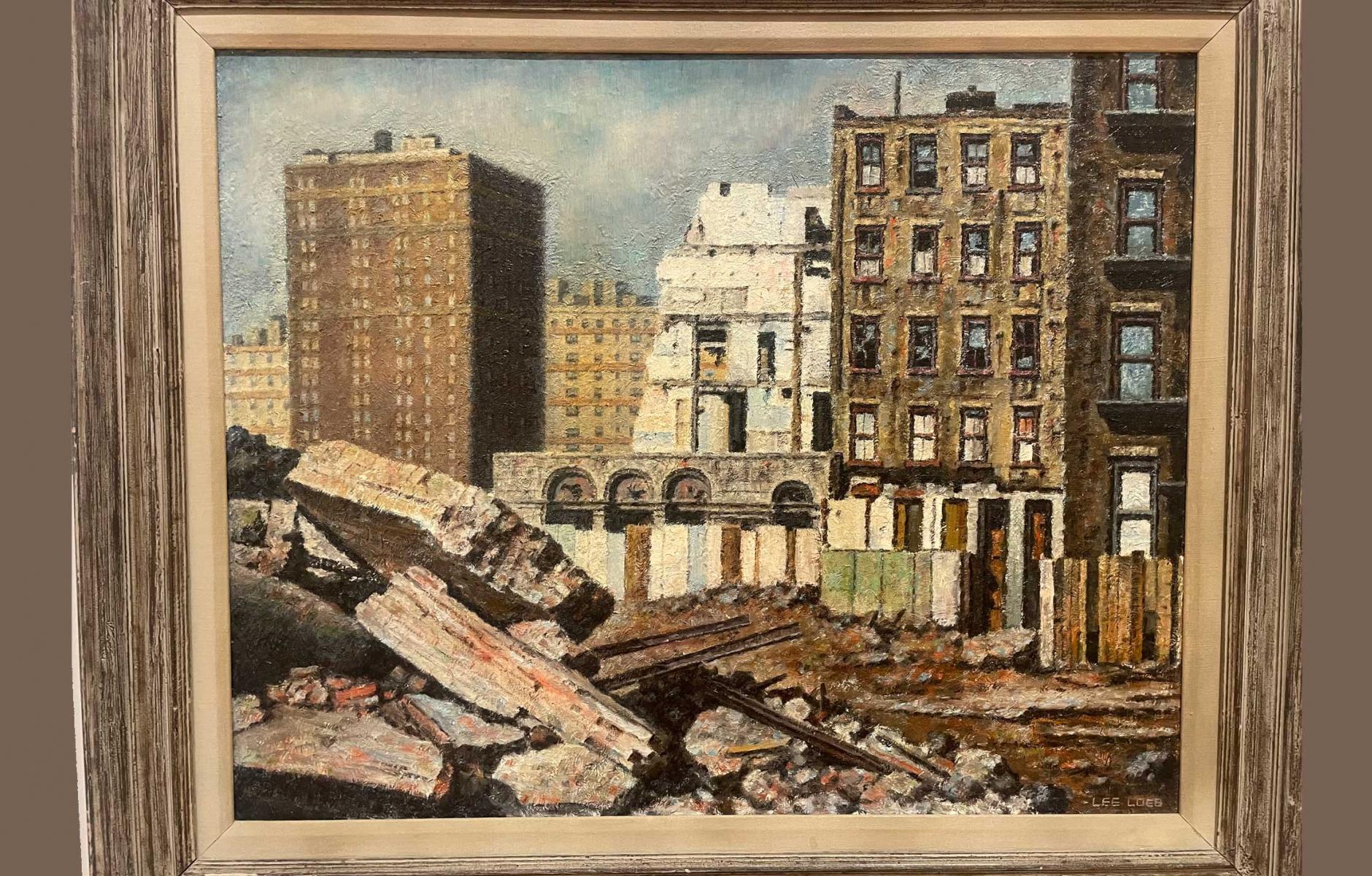
Urban Renewal, art that packs a punch
I was in Virginia Beach, on vacation, visiting the Chrysler Museum of Art in Norfolk, when I came across the painting. It is called, simply, Urban Renewal, circa 1960. The New York City artist Lee Loeb was known for cityscape paintings.
The museum has a wealth of great art, but the content of that piece struck me as particularly powerful. Loeb witnessed and recorded a force that destroyed large sections of cities at that time. While New York City suffered from urban renewal, it was less impacted than many smaller cities, relatively speaking, because The Big Apple is massive, with almost limitless urbanism, and strong defenders like Jane Jacobs lived there.
The very next year, Jacobs was to publish The Death and Life of Great American Cities, which changed the way many Americans viewed cities and urban renewal. She would also soon battle with Robert Moses over major highway projects in Lower Manhattan, struggles that she and the opponents ultimately won. Nevertheless, urban renewal would continue, and even grow in strength, over the next decade. For small or mid-sized cities, a single or handful of large urban renewal projects could destroy half of downtown and adjacent neighborhoods, seemingly overnight. I wrote this piece about Auburn, New York. A half-century later, it is just starting to recover.
Loeb’s painting is a protest, but a silent one. There was little opposition at the time to knocking down blocks and blocks of cityscapes. But I’m glad he was there to record it, because others were noticing the same thing—and they would eventually coalesce in movements toward better planning.
One of those movements was New Urbanism, which germinated in the 1980s and coalesced in the 1990s, when I joined. That’s when I became aware of how badly cities had been damaged through urban renewal, highway construction, and anti-urban planning—such as parking requirements and codes that favored a suburban built environment.
I was about one year old when Loeb made this painting. Born in Italy where my father was a Navy pilot, I returned with my family to grow up in a historic Philly suburb. In grade school when all this was going on, I missed it. I began to be aware of the flip side of urban renewal, the gobbling up of countryside in sprawl, as I entered adulthood.
Of course there are thousands of photographs of urban renewal. With those, you know you’re looking at the past. With a painting, you are looking right now, through the artist’s eyes, as if you are there.




